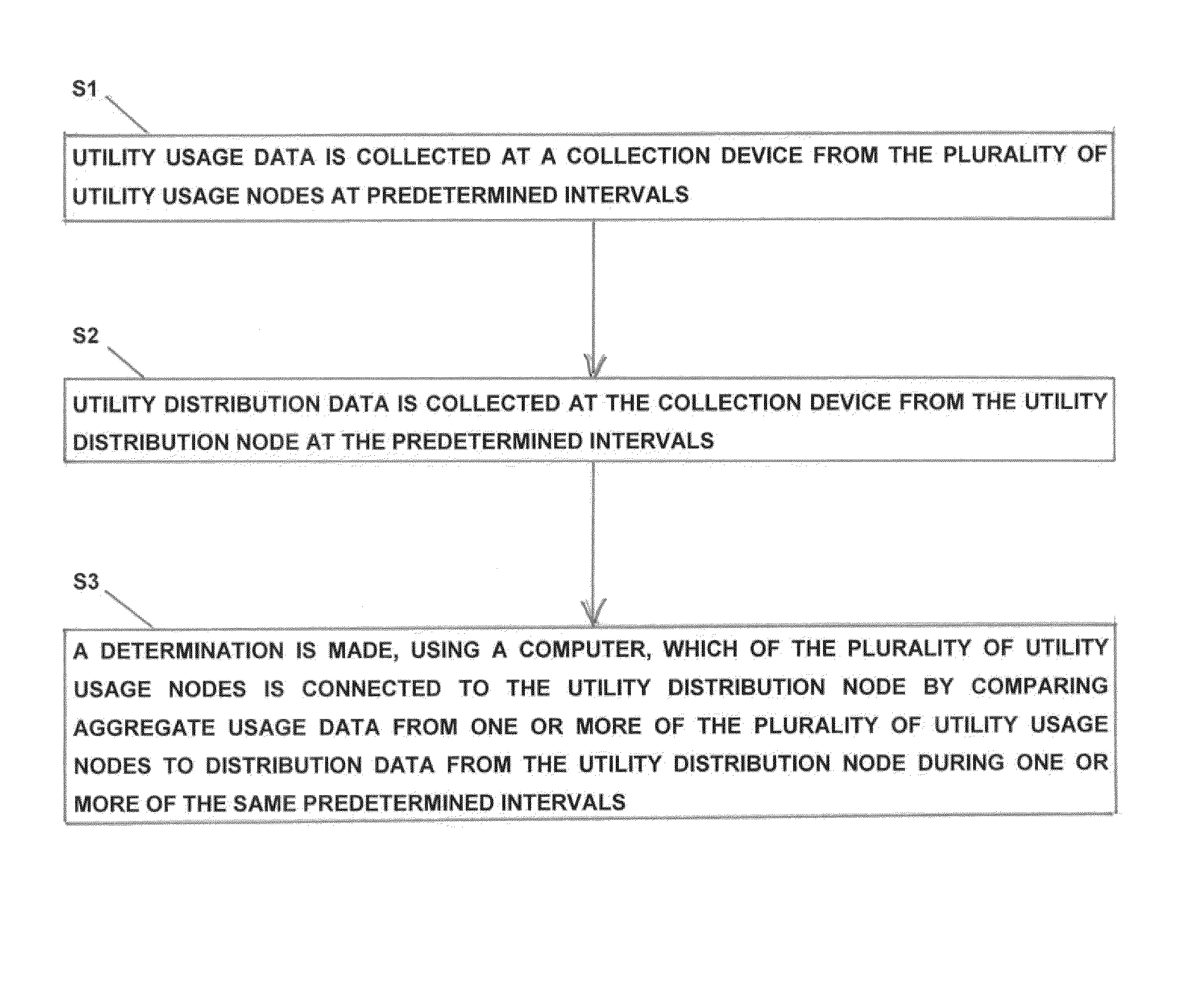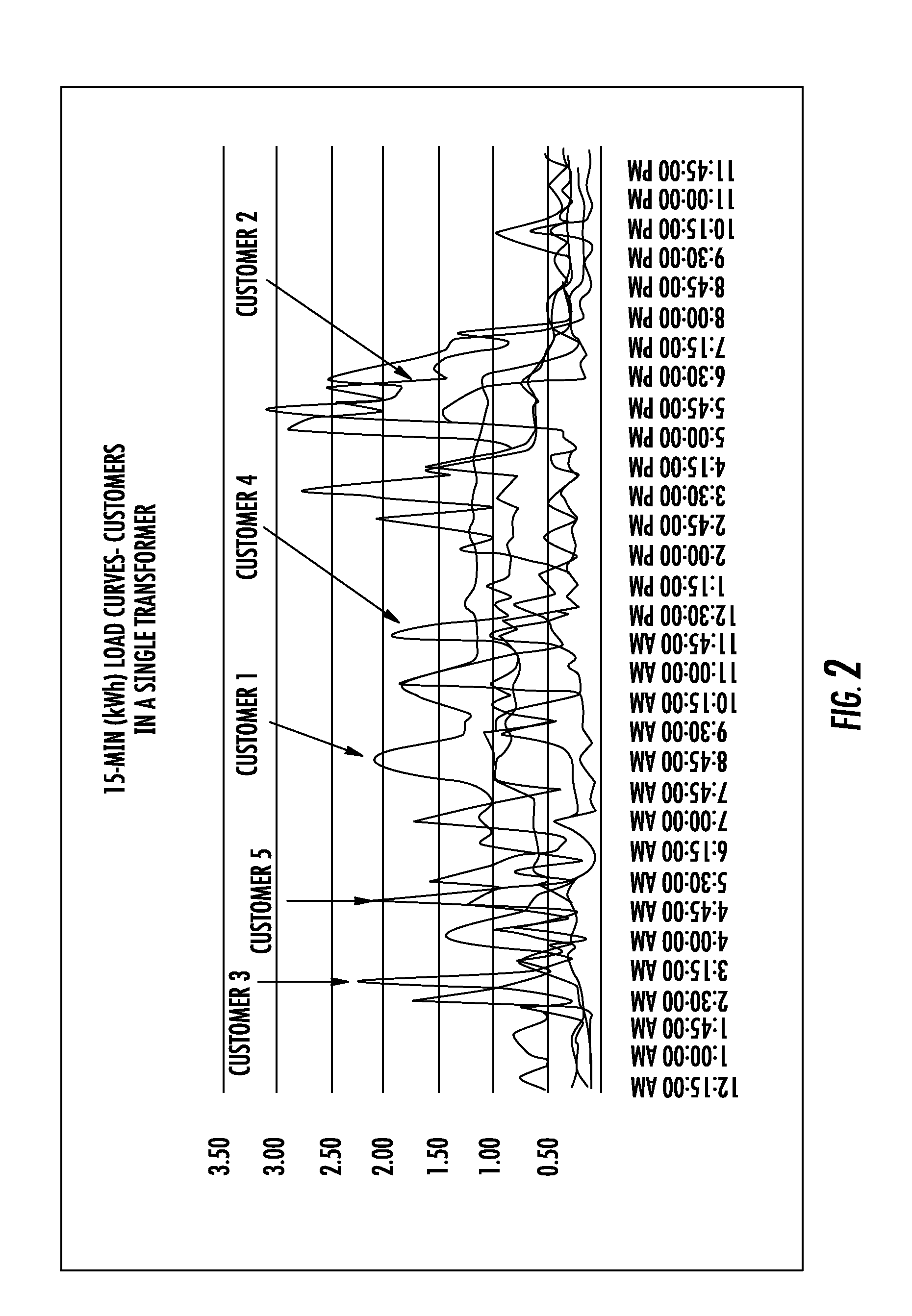Process, device and system for mapping transformers to meters and locating non-technical line losses
a transformer and meter mapping technology, applied in transmission systems, data processing applications, instruments, etc., can solve the problems of inaccurate records, incorrect wiring, and inability to accurately perform transformer-to-meter mapping, and achieve quasi-real-time determination and localization of non-technical line losses. , the effect of accurate transformer-to-meter mapping
- Summary
- Abstract
- Description
- Claims
- Application Information
AI Technical Summary
Benefits of technology
Problems solved by technology
Method used
Image
Examples
Embodiment Construction
[0031]Various aspects of the embodiments will now be described. The following description provides specific details for a thorough understanding and enabling description of these examples. Many of these specific details are optional. One skilled in the art will understand, however, that the invention and its various embodiments may be practiced without many of these specific details and options. Additionally, some well-known structures or functions may not be shown or described in detail, so as to avoid unnecessarily obscuring the relevant description.
[0032]The terminology used in the description presented below is intended to be interpreted in its broadest reasonable manner, even though it is being used in conjunction with a detailed description of certain specific examples. Certain terms may even be emphasized below; however, any terminology intended to be interpreted in any restricted manner will be overtly and specifically defined as such in this detailed description section. As...
PUM
 Login to View More
Login to View More Abstract
Description
Claims
Application Information
 Login to View More
Login to View More - R&D
- Intellectual Property
- Life Sciences
- Materials
- Tech Scout
- Unparalleled Data Quality
- Higher Quality Content
- 60% Fewer Hallucinations
Browse by: Latest US Patents, China's latest patents, Technical Efficacy Thesaurus, Application Domain, Technology Topic, Popular Technical Reports.
© 2025 PatSnap. All rights reserved.Legal|Privacy policy|Modern Slavery Act Transparency Statement|Sitemap|About US| Contact US: help@patsnap.com



